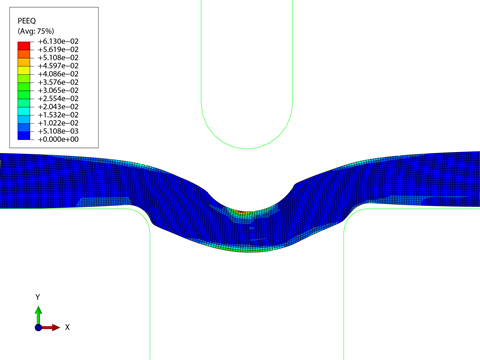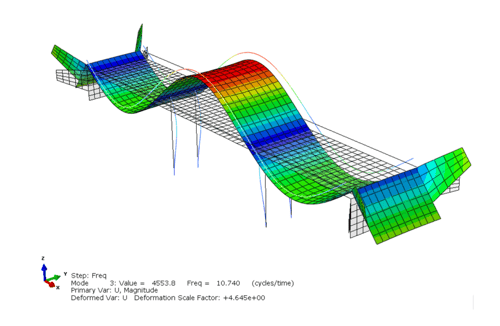The introduction

As with most of the projects we do within Simuleon, there is always a clear reason why customers ask us to perform a simulation. In this project it is all about setting up a simulation which determines the amount of Dragforce and the Drag Coefficient for this unique electric motorcycle. The goal for this team is to travel around the world in 80-days, so the more energy they can spare by providing insight in the current aerodynamics, the airresistance and the dragforce, the further they can drive without changing their battery packs, or drive the same distance but spare the life of the battery packs.
How do we approach this?
For this typical project we started by instructing the STORMEindhoven team how the design should be simplified in order to carry out the actual aerodynamics study. This resulted in a 3D-CAD file which they provided to us in order to start our explorations. Based on our experience from another motorcycle racingteam called novabike, we already determined in the past how to set these type of analysis up. For the purpose of this blog we will take you along the way.
The boundary conditions for the Cfd Study?
Air is flowing with a speed of 100 km/hour applied as an external flow. The wheels are standing still (not rotating), and the ground is modelled to capture ground effect.
The goals
The goals of these simulations are to investigate the Dragforce and Drag Coefficient at given speed of 100 km/h. With these values, STORM can estimate the current performance of the given shape for future improvements.
The formula for Cw-value
F = 0,5 x ρ x v² x Cw x A
For which:
- F = is the force on the motorbike + driver, in N (Newton) opposite to the riding direction.
- ρ = Rho is the airdensity in kg per m³. (We took 1,23 kg/m3 as average)
- v = Velocity in m/s > 100 km/h = 27,78m/s. Cw = Air-resistance value
- A = Frontal surface in m2The frontal surface area, is the surface area in m2 that represents the front view of motorcycle including driver.
How did we obtain the frontal surface?
Unfortunately, 3D-CAD software doesn’t have an automatic way of getting the frontal surface area (cross-section doesn’t work in this case) so we used a slight workaround. By using the following steps:
- Convert your 3D model to a 2D drawing (DXF with front-view)
- Manually remove and trim all unwanted internal lines and keep the outer contour
- Create surface/extrude from closed sketch geometry
- Measure surface in m2
- In our case the Surface area is 0.94243 m2

Setting up the analysis
We have set-up an analysis of an external flow applying air velocity of 100 km/h. the computational domain is created on a symmetric way, and we have expanded the length of the computational domain long enough to capture the vortex behaviour behind the motorcycle and drive and to prevent calculation errors. After that we have modelled the ground and positioned the motorcycle tyres tangent to the ground. In our mesh setup we have applied a three-stage boundary layer that captures the boundary-layer effect and ground effect. In total we have 1,7 milj elements in this model. After several mesh runs are done, and mesh seems to capture local features nicely, we created multiple mesh cases that can be used in our simulations to determine mesh convergence.
After the mesh is setup, it is time to determine the convergence criteria. Since this will be a steady-state calculation, the system needs to know when the goal(s) are achieved and the analysis may be stopped. In this particular case we used the global force in X-direction as a convergence criteria. Besides that, we also applied an equation goal. This type of goal is able to set-up formulas with parameters that are being calculated during the analysis. This perfectly suits our formula for the Drag coefficient. So in the equation goal we used the following expression:
GG FORCE X-direction : (0,5 * 1,23 * (27,78*27,78) * 0,94243)
This equation goal is also used as a convergence criteria.
As a try-out we have run the first analysis, which is a really coarse one, just to see if all the boundaries and specifications are applied correctly. After this we have set-up a batch run of all the multiple mesh cases we created (coarse, middle, fine, finer, etc), which will help us to determine the mesh–goal convergence.It turned out that our ”finer” mesh was the perfect trade-off between accuracy and time to run the analysis.
The results?

CFD always creates nice pictures, but they are quite valuable as well. The picture above shows the pressure distribution including velocity streamlines on the bodies. The advantage of these type of streamlines are the further we zoom-in, the more details we see, and it brings a perfect understanding how the air flows around the bodies.
As for the dragcoefficient and dragforce, we got the following values:
| Goal Name | Unit | Value |
| Drag Force in X direction | [N] | 207,5732549 |
| Cw – Drag Coefficient | 0,46414637 |
How to improve?
After discussing the results with the STORM team members, we have found some potential areas to apply possible improvements. One thing that struck us was the rider position, which seemed fairly straight up catching a big part of the air-resistance. Some exploration calculations showed a possible dragforce reduction of 20% by leaning more forward. That improvement on it’s own is more that we can gain with minor changes on the body which will be performed anyway. So the message for the STORM team was to find out if the rider position can be improved where a balance needs to be found between comfort and reduction of energy consumption. We will continue to support the STORMEindhoven team with their explorations and follow them on their exiting environmental friendly journey.

 Advanced Simulation
Advanced Simulation


